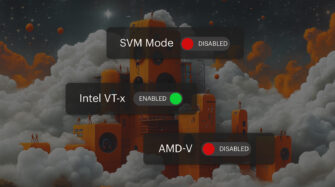Table of contents
- Why Managed Service Providers Need a Reliable Data Migration Strategy
- Step-by-Step Data Migration Checklist for MSPs and IT Teams
- Compliance, Security, and Data Handling Guidelines
- Communication and Documentation Best Practices for Data Migration
- Data Migration Troubleshooting and Rollback Playbook
- How Syncro Supports Secure and Scalable MSP Migrations
- Let Syncro Handle Your Data Migration Process
- Frequently Asked Questions
Data and help desk ticket migration is an important and often high-risk process for managed service providers (MSPs). Whether you’re moving clients to new platforms, upgrading internal systems, or executing a desktop migration, the stakes can be high. Risks such as data loss, downtime, compliance violations, and user disruptions can undermine client trust and disrupt business operations. That’s why having a structured, repeatable data migration checklist is important for MSPs seeking to safeguard data, maintain operational continuity, and comply with regulatory requirements.
In this guide, we’ll cover a step-by-step data migration checklist tailored for MSPs and explain how to avoid the common pitfalls that lead to data loss, downtime, and compliance issues.
Why Managed Service Providers Need a Reliable Data Migration Strategy
A simple, well-laid-out data migration checklist helps MSPs and IT teams manage even the most complex migrations with confidence. An organized checklist helps make sure that every step, from pre-migration planning to post-migration support, is executed correctly. A smooth IT migration process, including endpoint and ticketing system transitions, reduces the risk of errors and guarantees compliance with frameworks such as GDPR and HIPAA.
Top Data Migration Risks MSPs Must Address
With the idea of risk mentioned above, here are some of the unique challenges that MSPs can face during data migration projects, such as:
- Data loss and corruption: Even minor errors can result in significant setbacks or regulatory breaches.
- Downtime and business disruption: Extended downtime impacts client productivity and satisfaction.
- Compatibility issues: Legacy systems and desktop migrations often introduce unexpected obstacles.
- User disruption: Poor communication can lead to confusion and resistance among end-users.
- Compliance requirements: Frameworks like GDPR and HIPAA demand meticulous documentation and process control.
- Manual errors and lack of standardization: Without a repeatable process, risks can multiply.
Step-by-Step Data Migration Checklist for MSPs and IT Teams
Now that we’ve addressed some of the main challenges that can come from data migration for MSPs, here is a helpful data migration checklist for you to follow to help avoid those challenges.
How to prepare for pre-migration planning
1. Assess source and target environments:
- Inventory all endpoints, including desktops, servers, and cloud assets.
- Perform compatibility checks for hardware, software, and network configurations.
- Identify legacy systems and plan for desktop migration challenges.
2. Define your scope and objectives:
- Clarify what data, applications, and endpoints will be migrated.
- Set clear goals and success criteria.
3. Identify compliance requirements:
- Document all relevant frameworks (GDPR, HIPAA, CCPA, etc.).
- Map sensitive data and understand data residency obligations.
- Prepare audit trails for each migration step.
4. Risk assessment and mitigation:
- Conduct a comprehensive risk assessment.
- Develop mitigation strategies for data loss, downtime, and compatibility issues.
5. Create a communication plan:
- Establish a routine communication plan for clients and end-users.
- Use structured communication templates to inform stakeholders at every stage of the platform or desktop migration.
6. Backup and rollback strategy:
- Create full backups of all data and endpoints.
- Develop and test rollback procedures to quickly restore systems.
Preparation
1. Data mapping and validation:
- Map all data sources, including helpdesk databases, SaaS applications, and desktop-specific files.
- Validate data integrity before migration.
2. Endpoint readiness test:
- Verify hardware compatibility and software licensing for all endpoints.
- Make sure user access and permissions are up to date.
3. Tool and platform selection:
- Choose migration tools (e.g., Syncro’s RMM/PSA, third-party utilities, custom scripts).
- Plan for automation and scripting to streamline bulk desktop and endpoint migrations.
4. Documentation and audit readiness:
- Document the current state of all systems and endpoints.
- Prepare for audit by logging configurations and access controls.
5. Scheduling:
- Schedule migration windows to minimize user disruption, such as during off-peak hours or maintenance periods.
Migration execution
1. Initiate migration in phases:
- Migrate in defined batches (e.g., by department, location, or endpoint type).
- Monitor progress and log issues in real time.
2. Real-time communication:
- Provide regular updates to clients, stakeholders, and end-users.
- Address concerns promptly to maintain trust.
3. Troubleshooting and rollback readiness:
- Be prepared to implement rollback procedures if any major issues arise.
- Use your pre-defined playbook for rapid recovery.
4. Desktop migration checklist:
- Confirm user profiles, applications, and network settings on each desktop.
- Validate endpoint connectivity and security configurations.
Validation and testing
1. Data integrity checks:
- Verify that all data has transferred accurately.
- Use checksums or hash comparisons for essential files.
2. Endpoint validation:
- Test desktop and laptop endpoints using a sample checklist.
- Confirm applications, user profiles, and network settings function as expected.
3. User acceptance testing:
- Involve clients, stakeholders, and users in testing to make sure the workflows remain intact.
4. Compliance verification:
- Update audit logs and document validation steps.
- Make sure all compliance requirements are met.
5. Documentation updates:
- Update system and asset documentation to reflect the new environment.
Post-migration
1. Finalize documentation and asset inventory:
- Update all records to reflect the new environment.
- Document lessons learned for future migrations.
2. Debrief and communication:
- Use communication templates to summarize outcomes and outline next steps.
- Provide support resources and contact information.
3. Ongoing monitoring and support:
- Monitor devices, user environments, and endpoints for post-migration issues.
- Address any problems promptly to promote client satisfaction.
4. Template reusability:
- Refine and reuse your migration checklist for future projects to streamline your workflow.
Compliance, Security, and Data Handling Guidelines
Compliance and security are integral to every phase of the data migration process, especially when handling sensitive client information. You and your team can address regulatory frameworks like GDPR, HIPAA, and CCPA by:
- Identifying and mapping sensitive data.
- Restricting access with role-based controls.
- Encrypting data in transit and at rest.
- Maintaining detailed audit trails and documentation.
- Using secure credential management tools.
You should regularly review and update your documentation and data migration policies to demonstrate compliance with both clients and regulators.
Communication and Documentation Best Practices for Data Migration
By following the above checklists, you can make sure that your data migration process goes smoothly. But just as important as the data migration itself is how you communicate that process to your clients and partners. A clear and proactive communication system builds client trust and minimizes user disruption. Use structured templates for each stage, modeled after the following steps:
- Pre-migration client update: “We’re preparing to migrate your systems on [date]. Here’s what to expect, the timeline, and any actions required from your team.”
- In-progress status update: “Migration is underway. We’ve completed [X]% of endpoints. No issues so far, and we’ll keep you updated on progress.”
- Post-migration summary: “Migration is complete. All systems are operational. Please report any issues, and here’s how to access support.”
Data Migration Troubleshooting and Rollback Playbook
Even with careful planning and clear communication from all parties involved in the data migration process, issues can arise. Use this step-by-step playbook to address common problems that can occur along the way:
- Identify the issue: Monitor logs and user reports for errors or failures.
- Assess impact: Determine which endpoints or data sets are affected.
- Implement corrective actions: Use Syncro’s automation and scripting tools to resolve issues.
- Communicate with stakeholders: Provide transparent updates on the issue and resolution steps.
- Initiate rollback if needed: Restore from backups using your rollback procedures and always validate system functionality post-rollback.
- Document the incident: Record the issue, actions taken, and lessons learned.
How Syncro Supports Secure and Scalable MSP Migrations
Syncro’s unified RMM and PSA platform is purpose-built for MSPs managing data migrations and includes helpful key features, such as:
- Remote monitoring and management: Track endpoint status, deploy scripts, and automate bulk desktop migrations.
- Security: Role-based access, multi-factor authentication, and encrypted credential storage.
- Compliance: Detailed reporting and documentation for audit trails.
- Automation and scripting: Streamline migration tasks and reduce manual errors.
- Integrated communication: Keep clients informed with automated updates and ticketing.
Syncro empowers MSPs to deliver secure, audit-ready, and scalable data and application migrations every time. With Syncro, you can standardize your migration process with a reusable template that helps to create consistent results and reduces risk. Encourage your team to refine the template after each project, fostering continuous improvement and knowledge sharing.
Let Syncro Handle Your Data Migration Process
A structured, compliant, and intuitive data migration checklist is essential for MSPs seeking to minimize risk, maintain client trust, and deliver seamless transitions. Syncro makes this complex and high-risk process simple and secure, allowing your team to approach every data migration with confidence.
Ready to simplify your next migration?
Book a demo or schedule a free trial to see how our platform can streamline your process from start to finish.
Frequently Asked Questions
Segment each client’s migration with separate checklists and communication plans. Use Syncro’s automation features to manage multiple projects simultaneously.
Maintain detailed logs of all migration activities, access controls, and validation steps to allow for accurate tracking and documentation. Take advantage of Syncro’s reporting tools to generate audit-ready documentation.
Schedule migrations during off-peak hours, communicate clearly with users, and provide training or support resources as needed.
Syncro provides RMM, PSA, automation, scripting, and reporting tools designed to streamline migrations and compliance.
Develop and test rollback procedures in advance, maintain up-to-date backups, and document each step for rapid recovery in the event of any issues.ache can prevent disruptions, reduce troubleshooting time, and help your IT operations run efficiently. With Syncro, keeping up with your cookies is easier than ever. Book a demo or schedule a free trial to see how Syncro makes the process simple.
Share














